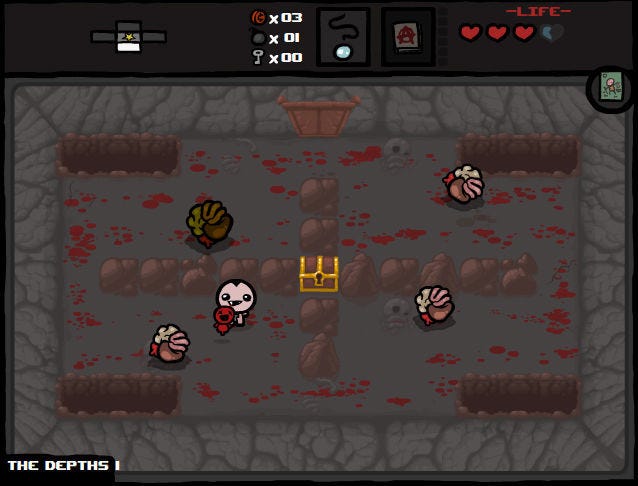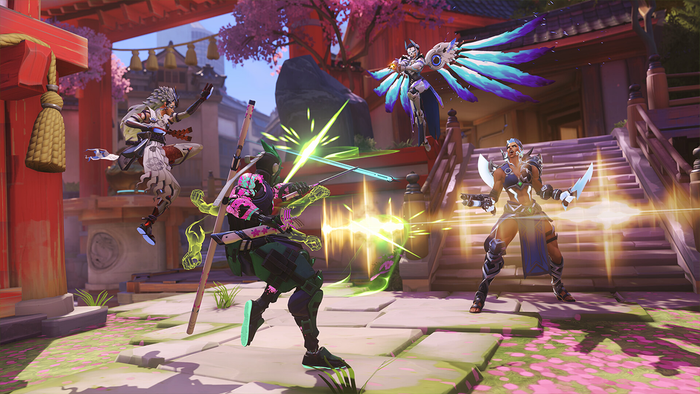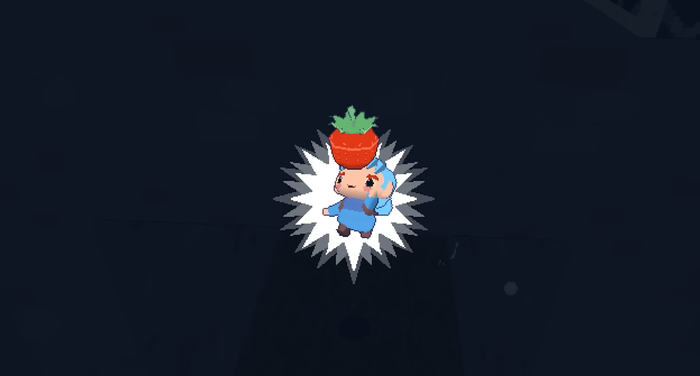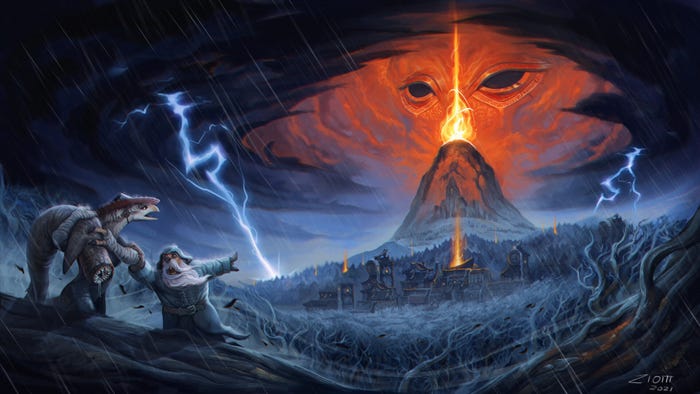7 twin-stick shooters that game developers should study
It was an arcade mainstay in the early 1980s, and devs are still finding ways to work fresh twists on its simple, endlessly compelling formula. Here are seven instructive examples of the genre.

The twin-stick shooter, at its core, seems like a simple concept. Using two joysticks, the player can rotate and move in any direction. One stick controls movement, the other is used for firing.
But there’s a lot going on under the hood, according to Eugene Jarvis, one of the founding fathers of the genre. “When developing twin-stick shooters there is an element of sensory overload due to the high degree of freedom that provides incredible power," he says. "But it also involves massive amounts of choice and decision making and mechanical coordination challenges to the player."
"This was especially true in the 1980s, when the twin-stick shooter was a very new and novel design,” he adds. And amazingly, that genre that seemed perfectly at home in Reagan era arcades is still popular, and developers are still finding ways to work brilliant twists on the straightforward formula.
Twin-stick shooters are enjoying a bit of a renaissance at the moment, thanks to indie game developers. With that in mind, we reached out to several devs who've worked in the genre or been deeply influenced by it, and asked them to name some of their favorites exemplars of the form, and tell us what lessons they can teach designers today.
1) Robotron: 2084 -- Simple yet distinct enemy design

Created by Jarvis and Larry DeMar in 1982, Robotron: 2084 is an arcade classic that helped popularize the twin-stick shooter. It’s set in a fictional future where robots control everything and humanity is on its last legs. The player must defeat wave after wave of enemies to rescue surviving humans and earn points. “Robotron: 2084 might be my favorite arcade game of all time, and I think about it a lot when I work on my own projects,” says Retro Dreamer developer Ryan Evans.
One thing Evans admires in particular is the game’s enemy designs. Each enemy is simple in terms of behavior, he says, but is clearly distinct from each of the others. Grunts are slow, predictable and easy to kill, for example, while the massive Hulks are unkillable and move erratically. “When they're combined into a wave, the different combinations of enemies create a fantastic challenge, especially later in the game,” he says.
Takeaway: Deliberate and thoughtful enemy design can elevate a game.
2) Smash TV -- A game far ahead of its time

This 1990 arcade game was also created by Eugene Jarvis, and it’s often considered a spiritual successor to Robotron: 2084. Both games are mechanically similar; the left stick moves, the right stick shoots, waves of enemies come at you from all sides, etc. But what sets Smash TV apart is its theme and presentation. Set in the far-flung future year of 1999, contestants compete in a violent game show for prizes like money, toasters, VCRs (kids, ask your parents) and freedom. A live studio audience cheers for you between levels and a smarmy host offers catchphrases like, “Good luck! You’re going to need it” and “I’d buy that for a dollar!” Basically, it’s The Running Man on steroids.
“Smash TV was far ahead of it's time in theme, feedback, presentation, boss design, enemy diversity, the whole package,” says Brian Bucklew, co-founder of Freehold Games. “It's still worth a careful study in all its aspects by modern designers.”
Takeaway: A strong, cohesive theme can make familiar mechanics feel fresh.
3) Geometry Wars: Retro Evolved 2 -- An excellent example of ‘negative design’

Geometry Wars 2 is a beautiful follow-up to an already-influential game. Stephen Cakebread's beloved shooter franchise started life as an easter egg in the 2003 Project Gotham Racing 2, and ended up as a killer app for Xbox Live Arcade. This 2008 sequel made tweaks and additions to the original formula that elevates it in every way. But Andrew Aversa, lead developer at Impact Gameworks, says it’s what the game subtracts that’s worth studying. “Geometry Wars 2 is an excellent example of how negative design -- removing elements, not adding them -- can yield exciting and novel variations on regular gameplay,” he says.
He’s referring specifically to a game mode called Pacifism. It removes the shooting aspect and dares players to survive as long as possible by avoiding enemies. The result, Aversa says, is fun to play and exhilarating to watch. “When looking to add more content and variety for our players, we should keep in mind that sometimes the removal of mechanics and elements can be every bit as effective as adding new ones, and often much less costly in development resources,” he says.
Takeaway: When you brainstorm about possible elements to add to a game, spare a moment to also brainstorm about possible elements to remove as well.
4) The Binding of Isaac -- coherent chaos

A major aspect of every twin-stick shooter is, of course, the aiming and shooting. If the action feels off in some way, if it doesn’t feel fun, the game will suffer. It's also important to make the player feel like they are balanced on a knife edge between being overwhelmed and being in control. For an example of twin-stick shooting done right, look to Edmund McMillen and Florian Himsl’s 2011 title The Binding of Isaac. In this game, the player, as Isaac, has to fight off a variety of monsters in his mother’s basement. Oh, and he’s also naked, fights with his projectile tears, and there’s a lot of poop lying around. It’s an odd entry to the genre for sure, but it’s also a good example of what Sam Coster, co-founder of Butterscotch Shenanigans, calls “tactical readability.”
“Tactical readability is a big part of creating fast, great-feeling twin-stick gameplay,” he says. “In The Binding of Isaac, enemies have a very low overall number of HP that is easily countable by players. It often takes just 1-5 shots to kill anything. As a result, tactical shifts around who to kill when, and how many hp they have remaining. And it can be done on the fly without additional UI elements like HP bars, which makes for less attentional load on the player – and lets them stay in the game world for longer. Things are easier to predict, which can be huge in a game that has lots of enemies and/or bullets flying around.”
Takeaway: Equip players with a clear understanding of what exactly they're up against at any given moment, and they'll enjoy being buffeted by an overwhelming horde of foes.
5) Nuclear Throne -- The power of ‘less is more’

Vlambeer’s 2013 release Nuclear Throne does amazing things with a couple of core mechanics. It combines the usual trappings of the roguelike genre -- procedural maps, permadeath, punishing difficulty -- with the frenetic action of a twin-stick shooter. The result is a game that’s tightly designed and highly addictive.
“This game is quirky and hard,” says Simon Graveline, creative director at Grave Danger Games. “It does little, but it does it well. A real example of ‘less is more’ and an inspiration when it comes to focusing on a core gameplay mechanic before adding superficial layers to your game.”
“Nuclear Throne is my favorite modern example of the genre,” adds Brian Bucklew, co-founder of Freehold Games. “It demonstrates two things successfully to me: one, power of a focus on making really thoroughly juiced interactions throughout the game. And two, the power of combining several axis of components that are individually simple (unique character powers and upgrades, weapons, enemy types) but together create a very large combinatorial surface area for tons of interesting exploration and play.”
Takeaway: Focus on getting the basics of your game right before adding in new layers. (You may not even need to add new layers.)
6) Geometry Wars: Retro Evolved 3 -- How to fight off a dreaded case of sequelitis

“The sequel dilemma has always been a conundrum for developers,” says Eugene Jarvis. “How to push the title forward without going too far to destroy the original magic, or conversely being too conservative and serving up just another reheated boring clone. It seems that, in making a video game, you probably need 1,000 cool ideas, but of those 1,000, a handful better be legendary!”
Jarvis believes that the 2014 Geometry Wars 3 has three key “legendary” design elements that helped push it forward. One is the upgradable drone that accompanies the player throughout the game. Another is the wraparound 3D maze maps that eliminate hiding places and forces constant movement. Last is the introduction of indestructible maze elements, which Jarvis says add navigational challenges and tension by limiting the player’s motion in a very un-Geometry Wars way. “All of a sudden, what could have been a me-too sequel is full of new challenges and action!” he says.
Takeaway: A few brilliant twists on a well-established formula can make people fall in love with your franchise all over again.
7) Tormentor X Punisher -- Finding new ways to ratchet up the difficulty

Fast-paced, violent, and unapologetically f$%*ing vulgar, the recently released Tormentor X Punisher is a game where anyone can be killed in one hit, including the bosses and yourself. Firing your shotgun reloads your machine gun. The bosses change the shape of each arena every time they die by creating environmental hazards for the player. There are a lot of cool mechanics in the game, says Vlambeer’s Jan Willem Nijman, but that last one he believes is worth studying.
“After killing a boss (they are handcrafted, but you don't know which one will spawn), they leave a permanent mark on the battlefield, like pools of acid, giant rotating saws, or just a bunch of walls,” Nijman says. “This increases the difficulty of the gameplay afterwards in ways that isn't just ‘more of the same enemies.’ It forces skilled players to not just get better at the regular game, but also learn how to deal with the different consequences of beating the different bosses.”
Takeaway: Simple twists to established tropes can create new layers of strategy and challenge.
About the Author(s)
You May Also Like









